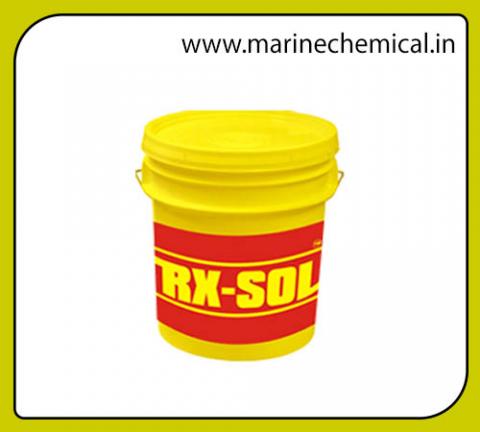
Hardness Phosphate Control
Hardness Control is a white dry powder Phosphate Boiler Water Treatment product used for the reduction of hardness in boilers. Hardness Control is highly soluble in water and It will precipitate calcium hardness as a non-adherent sludge.
Hardness Control is formulated to form a precipitate with calcium ions which will not adhere to metal surfaces but are in a form suitable for blowdown.
Used for boilers and water softening.
Formation of Calcium Sulfate is main cause for SCALE formation :::
The principal problem potential posed by sulfate ions in water is the possibility of calcium sulfate scale formation. Precipitation of calcium sulfate can occur when high concentrations of both calcium and sulfate exist simultaneously. There are three primary areas of water treatment in which calcium sulfate precipitation may occur boilers, cooling systems, and ion exchangers operating in the hydrogen or acid mode.
In boilers, calcium sulfate scale formation has been reduced to a minimum by modern treatment practices. The low hardness levels largely preclude calcium sulfate boiler scale. By contrast, cooling systems are subject to calcium sulfate scale deposition because the makeup is usually not treated for hardness removal. Cooling water is usually treated with sulfuric acid for pH control, and the makeup is cycled, i.e. concentrated. Calcium sulfate scale deposition can result unless the cycles of concentration are properly controlled in conjunction with the proper use of scale control chemicals. Cation ion exchangers regenerated with sulfuric acid also can pose a major calcium sulfate problem. Calcium sulfate precipitation can be avoided by controlling the acid concentration and the flow rate through the exchanger.
Sulfate content can be calculated in Laboratory by using this method ::: http://rxmarine.com/SULFATE-TEST-KIT
Sampling And Testing
A sample of boiler water should be drawn for analysis daily. The sample should always be taken from the same point after blow down, cooled and tested immediately. Follow the Rxsol Hardness Test Kit instructions and fill the Boiler Water Log Form according to result results. It is important that regular testing is carried out to ensure levels of treatment are correct.
Physical Properties :
Appearance :White powder
Corrosive action :NonE
pH 1% solution :8.8
Flash point :None
Deposition and corrosion of boiler systems reduce efficiency, increase fuel and water consumption, and may lead to failures, which are a safety hazard, add maintenance costs and may impede production. RXSOL's boiler water internal treatment programs provide highly effective protection against corrosion and scale formation to ensure optimum performance and availability of your steam system while reducing the total cost of ownership and environmental footprint through energy and water savings.
Hardness Phosphate Control is available in several packaging sizes at several stock points like Fujairah, Dubai, Muscat, Barka, Nairobi Kenya, Uganda, Africa Canada, Bristish Columbia, Mumbai, Thane, Kandla, Gandhidham, Vizag, Vishakhapatnam, Ennore, Chennai, Kolkata.
#BoilerWaterTreatment_HardnessCONTROL
#BoilerWaterTreatmentCHEMICAL_SUPPLIER
#BoilerWaterTreatment_supplierUAEdubai
#BoilerWaterTreatment_supplierOMANmuscat
A precipitant designed to eliminate scale deposits and lower the hardness of water in boilers with working pressure up to 60 bars.
It is used in conjunction with alkaline liquid to prevent calcium scale deposits. Both products are used in our standard boiler water treatment programs for low-pressure boiler systems (0-32 bar) and medium-pressure steam propulsion vessels (32-60 bar).
Phosphate/pH relationship recommended to control boiler corrosion. Different forms of phosphate consume or add caustic as the phosphate shifts to the proper form. For example, addition of monosodium phosphate consumes caustic as it reacts with caustic to form disodium phosphate in the boiler water according to the following reaction:
| NaH2PO4 | + | NaOH | ® | Na2HPO4 | + | H2O |
| monosodium phosphate | sodium hydroxide | disodium phosphate | water |
Conversely, addition of trisodium phosphate adds caustic, increasing boiler water pH:
| Na3PO4 | + | H2O | ® | Na2HPO4 | + | NaOH |
| trisodium phosphate | water | disodium phosphate |
sodium hydroxide |
Phosphate/pH relationship recommended to control boiler corrosion. Different forms of phosphate consume or add caustic as the phosphate shifts to the proper form. For example, addition of monosodium phosphate consumes caustic as it reacts with caustic to form disodium phosphate in the boiler water according to the following reaction:
| NaH2PO4 | + | NaOH | ® | Na2HPO4 | + | H2O |
| monosodium phosphate | sodium hydroxide | disodium phosphate | water |
Conversely, addition of trisodium phosphate adds caustic, increasing boiler water pH:
| Na3PO4 | + | H2O | ® | Na2HPO4 | + | NaOH |
| trisodium phosphate | water | disodium phosphate |
sodium hydroxide |




